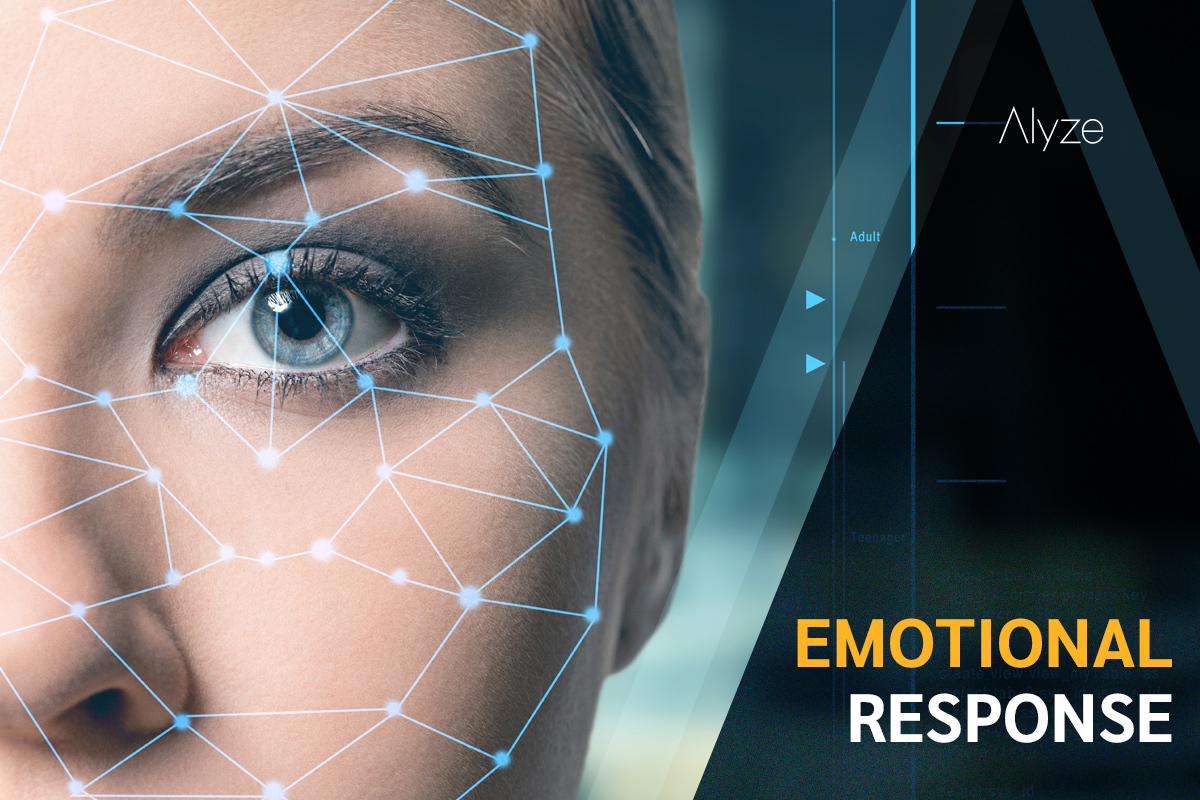
How Alyze Works
- 1.Introduction
- 2.Artificial intelligence and Neuroscience to analyze the emotional response of the audience
- 3.How does this facial recognition technology work?
- 4.Faster than ever
Introduction
Is there a way to measure the emotional reaction triggered by an advertisement?
What does a spectator feel when watching your ad?
Which song will have a better performance?
Will I succeed with my ad campaign?
Are the images right to get the attention of my target audience?
Those questions lacked a clear answer until now. But now Alyze provides an answer for each one of them based on the scientific evidence.
As we explained in our previous article, Alyze can measure the emotional reaction of a person in front of an advertisement or a movie. The platform is able to detect and categorize the feelings generated by any content, providing creators with a powerful tool that will help them make decisions based on scientific evidence.
Artificial intelligence and Neuroscience to analyze the emotional response of the audience
What makes Alyze unique to measure emotions in advertisements? Facial recognition and neuroscience. Alyze’s AI Engine detects and registers the basic emotional reactions: happiness, surprise, sadness, anger, disgust, and fear. Those reactions can occur separately (i.e., just happiness) or combined (i.e., happiness and surprise mixed).
How does this facial recognition technology work?
Every emotion contains a specific combination of facial expressions. For example, “happiness” is the sum of moving up the cheeks and the corners of the mouth. This happens with every emotion.
Alyze knows exactly what emotions are triggered at any time during a test with participants that resemble the final audience of a content. Alyze also knows the evolution of those emotions through the watching session. This is how we know…
…which emotion got a higher (or a lower) score.
…at what precise time did occur the emotional reaction.
…how varies each emotion while the stimulus is present.
…the emotional evolution depending on the content.
Thanks to this innovative analysis we can tell our customers:
- The engagement rate.
- The emotional variation (between the beginning and the ending of a given stimulus).
- The attention to content.
- The emotional spectrum (the 6 basic emotions).
Moreover, our customers can add additional questions to the audience in order to extract more information such as: the awareness generated by their content, the purchase intention, overall satisfaction, branding knowledge, etcetera.
Faster than ever
All the data can be collected quickly and easily. You don’t need to move your audience to any place. They can participate in your tests at any time using their laptops.
In a matter of hours, you will have collected tons of data that will help you make the right decision. A decision that will turn your advertisement into a huge success.
Wanna try your ad? Let’s start now!